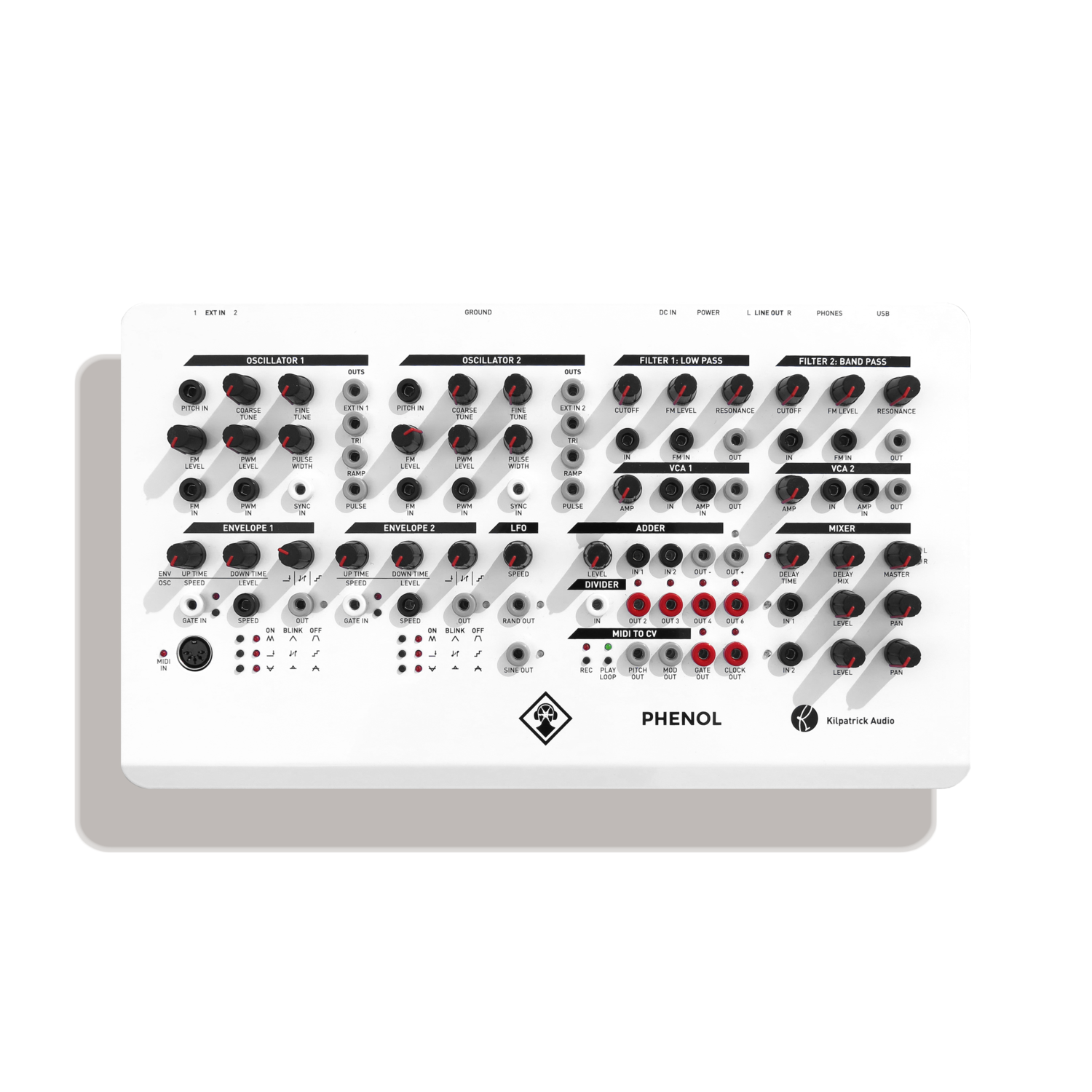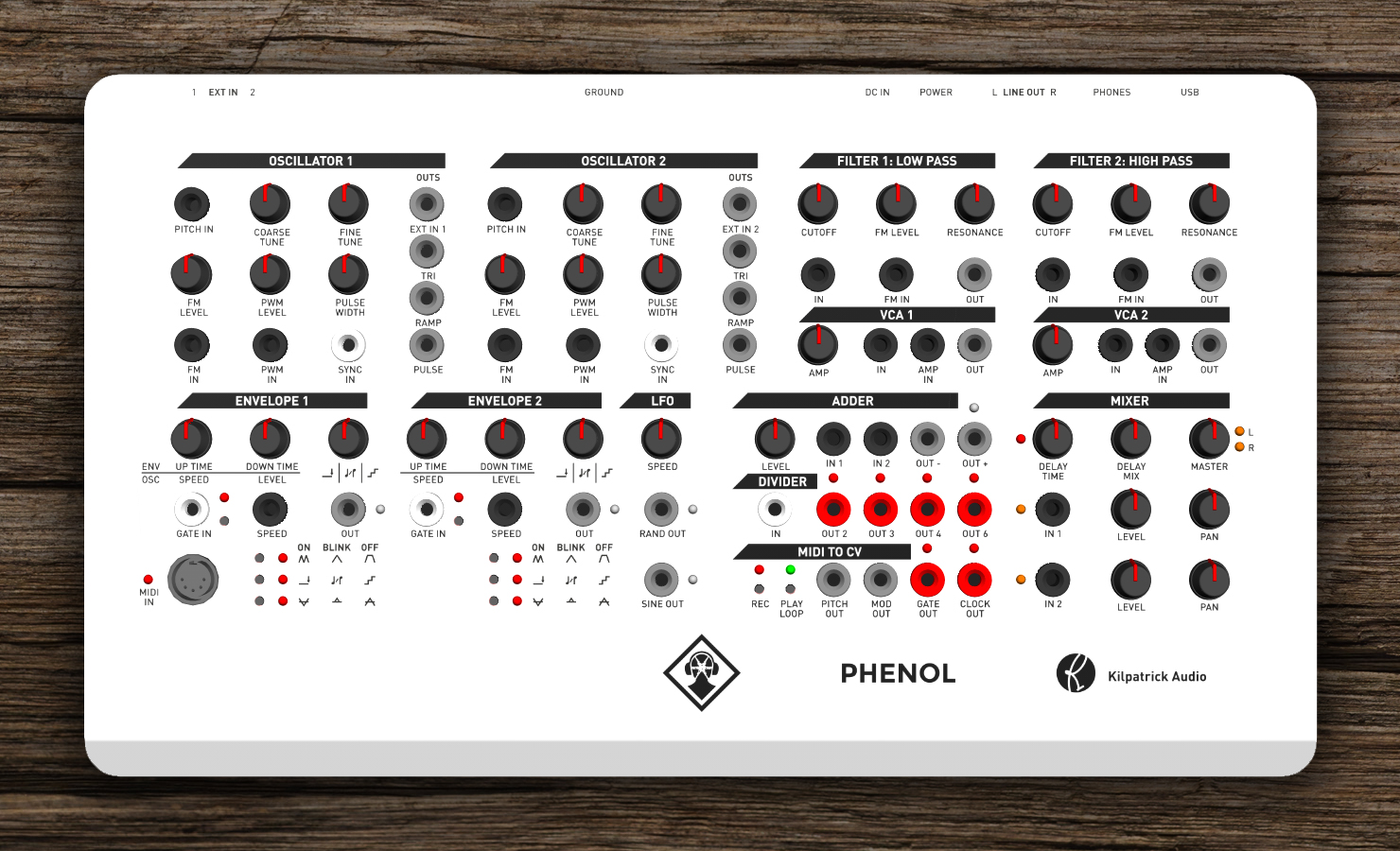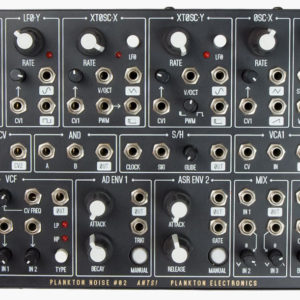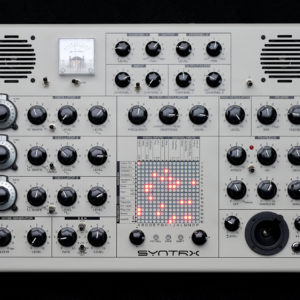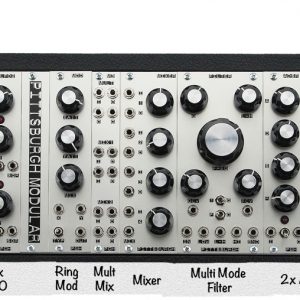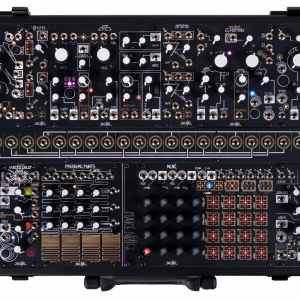Description
Portable, patchable, powerful modular-inspired synthesizer
PHENOL is a new type of electronic instrument from Kilpatrick Audio. Inspired by modular synthesizers, PHENOL offers the creative potential, sound and hands-on experience of a modular synth, in a sleek, compact and affordable package. And best of all, PHENOL is compatible with modular systems because it uses the same voltages and banana connectors as the Kilpatrick Format and similar modular synthesizers.
Whether you already love modular synthesizers and want a smaller instrument for portability, or whether you’ve heard about modular synths and want to get your feet wet, PHENOL offers an amazing instrument at a great price.
Please note – due to the size & value of this item the shipping charges are as follows:
£30 p&p Royal Mail Special delivery next day delivery service within in the UK.
£15 p&p Parcelforce 48 delivery service within in the UK.
We will request any additional amount due via Paypal.
International customers please email us to arrange a shipping quote.
Specifications:
- Banana patch system with colour-coded jacks and voltages compatible with Kilpatrick Format and other modular systems – PHENOL Panel Layout
- Two analog VCOs – triangle, ramp and pulse outputs
- Two analog filters – low pass and high pass (high pass sounds like a resonant bandpass)
- Two analog VCAs with level control
- Two envelope generator / LFO combos with many unique features (digital)
- An LFO with sine and random output (digital)
- Internal MIDI to CV converter with DIN and USB MIDI interfaces
- Built-in MIDI sequencer / looper
- Compact mixer with digital delay (330ms of delay time)
- Digital pulse divider – divide MIDI clock, LFOs or audio signals into useful musical divisions
- Buffered analog mixer / mult / inverter with level control
- Two external audio inputs buffer and amplify line-level signals – process drum machine or other audio sources through the system
- Rear panel connections / controls:
- USB-B port for USB MIDI connection to a PC / Mac
- Headphone and line outputs (1/4″ jacks)
- Power button
- DC power input – 2.1mm coax – centre positive 24VDC
- Ground banana jack
- External input (1/4″ jacks)
- Power input: 24VDC @ 250mA (500mA regulated supply required)
- Operating temperature: 15C to 30C (59F to 86F)
- Storage temperature: -10C to 45C (14F to 113F)
- Dimensions: 15.8″W x 8.8″L x 2.5″H (including feet and knobs)
- Weight: 5lbs (2.27kg)
- Universal input power supply (100-240V) included with a set of interchangeable power plugs for UK & EU.
- Designed and made in Canada using high quality parts
- Warranty: 1 year (no warranty on cables)
- Comes packaged with 10x starter banana cables.
Manual
All PHENOL documentation is available online. Click here for the full PHENOL manual with links to demonstration videos.
- PHENOL Patch Sheet – PDF
Sounds
These sounds were recorded from the prototype shown in the picture above. No external processing or effects were used.
- The Stereo Effect Project – Gate In – All sounds except the drums are made with PHENOL. Thanks to Keith Murray for putting PHENOL through its paces and making this excellent track!
- PHENOL Prototype – Jam 1
- PHENOL Prototype – Jam 2 (Random Transfer at the controls)
Music by PHENOL Users
Know of anything we should link here? Let us know!
- VennDiagram – Soundcloud page for the excellent Toronto-based artist VennDiagram
- DJ Ohm (Soundcloud) / DJ Ohm (Bandcamp) – French musician
- DiscoverNoise – PHENOL demos
Demo Videos
Mini Sequencer Demo
Soft Loop
Delay Fun
Feature description
PHENOL Video Manuals
FAQ
What about S&H and Stepped LFO Outputs?
Although PHENOL doesn’t have a dedicated sample and hold circuit, you can create some of the same effects with the LFO Random output. If you want those stepped random filter cutoff sounds, or just some crazy pitches that go all over the place… this is already possible.
Another common use of a sample and hold is to make stepped voltages from LFOs. Don’t worry, because we have you covered here too. Both envelope sections have a Steps mode where you can quantize the output. You can go from 2 steps (lowest voltage / highest voltage) all the way up to a perfectly smooth linear ramp. There are 16 distinct settings.
How do the Envelopes work? They look like they have a lot of modes.
The envelopes are some of the most powerful features of PHENOL. They have three dedicated control buttons which select from three modes each as follows:
Envelope Type
This setting affects the overall behaviour of the envelope.
- Attack / Hold / Release – Envelope mode mostly for regular note amplitudes. The envelope will ramp up to the maximum level, hold as long as the gate is applied, and then fall back to the minimum value when the gate is release. The up and down times can be controlled separately.
- Attack / Release – For percussive sounds or snappy bass sounds, when triggered the envelope will ramp up to the maximum value and then immediately start ramping back down to the minimum value. Holding the gate has no effect.
- Oscillator Mode – This mode works as a low frequency oscillator. The first control affects the speed, and the second control affects the amplitude. When the mode is switched on the gate is latched so that it runs all the time. If you apply a gate you can operate the oscillator in a momentary mode.
Modulation Control
This setting affects the function of the third control pot.
- Steps – The third control affects the smoothness of the envelope or oscillator shape. The control can be set from 2 levels (lowest / highest) all the way up to the smoothest value. Various useful divisions can be made.
- Arp – The third control affects which arpeggio is applied to the output. Instead of equally-spaced intervals like in steps mode, a number of different musical arpeggios are selectable.
- Gate Delay – The third control affects the delay of the gate when turning on. This allows effects such as a filter envelope or modulation to start after a delay.
Output Control
This setting affects the output signal.
- Normal – The output ramps from the lowest to the highest value.
- Invert – The output is inverted and ramps from the highest value to the lowest value.
- Absolute – The output ramps from the centre point and goes positive only. The range is reduced to half.
More Tech Details
PHENOL is based on the Kilpatrick Format modular synth released by Andrew Kilpatrick in 2012. Specs for this system designed for DIY and commercial makers to use are freely available: Kilpatrick Format Technical Specifications
The use of banana jacks makes it really easy to interface PHENOL with other gear, even your own projects. The jacks are inexpensive and easy to build into nice looking weekend DIY projects. If enough people are interested we’ll dedicate a section of our site to feature interesting things you can build to add on to your PHENOL!
- Gate / Pulse Signals – A gate or pulse signal is 0V when off and 5V when on. These are output on red banana jacks and input on white jacks. Input trigger when the voltage rises above about 1V.
- Audio / CV Signals – Audio and CV signals range from about -5V to +5V. These signals are output on grey banana jacks and input on black jacks. Envelopes and VCAs use the full range of control from -5V to +5V. All signals are intercompatible.
- Pitch CV Signals – Pitch signals calibrated to musical pitch are specified as 1V/octave. When disconnected (0V) oscillators should be in the centre of their range.
- Impedances – As a general rule: CV outputs are 1K impedance (100 ohms for pitch CV) and 20K or more input. (100K for pitch CV)
Voltage Compatibility with Other Systems
Many people have asked about the compatibility between PHENOL and other modular formats. As was stated above, PHENOL uses the same voltage standards as the Kilpatrick Format modular system which will hopefully be adapted as an industry format within the coming years. It solves a number of existing problems with most modular systems both electrically and mechanically.
Specific compatibility notes:
-
- All CV and audio signals range from -5V to +5V. Pitch uses the industry standard 1V/octave.
- Pulse and gate signals use 0V = off, and +5V = on. This is pretty much the standard on most systems. PHENOL pulse/gate inputs will activate with voltages above about 1V.
- The main difference with Kilpatrick Format / PHENOL is that envelopes and VCAs use the entire voltage range, instead of simply positive-only voltages which are often used on other systems for envelopes, VCAs and some digital modules like MIDI to CV converters. You might need to boost an external signal (with the ADDER section) or attenuate a signal leaving PHENOL (with the input control on the other module) to make them interface perfectly.
- The use of fully bipolar voltages for all CV signals means that every output and input is compatible and you never have to wonder if the range of signal will be right. Additionally, always using bipolar voltages means that the local control such as tuning, cutoff, etc. is generally at the middle of its range and the CV input simple adds or subtracts to the existing setting. This makes logical sense and works better when patching and unpatching on the fly.
- Conversion to/from other cable types such as minijack (1/8″ or 3.5mm) or 1/4″ can be easily accomplished by making a small breakout box or just making cables that have a banana plug on one end and the other type of plug on the other end. The only important concern is that you must connect the ground of your other system to the front panel ground connection on PHENOL before patching. You can use a minijack / banana cable plugged into an unused jack on your other system to ensure the ground is connected all the time. PHENOL provides a dedicated ground jack for this purpose.

